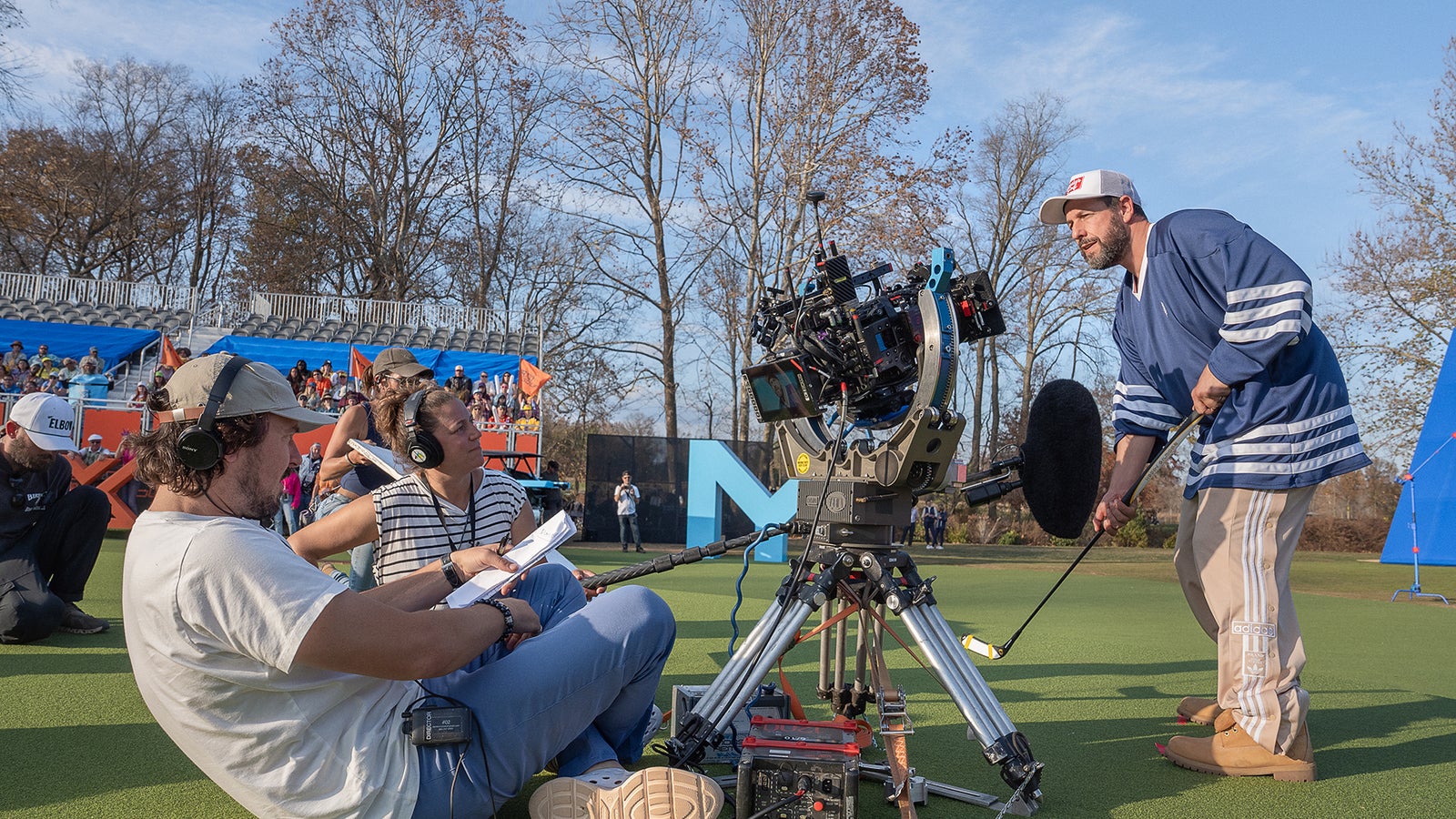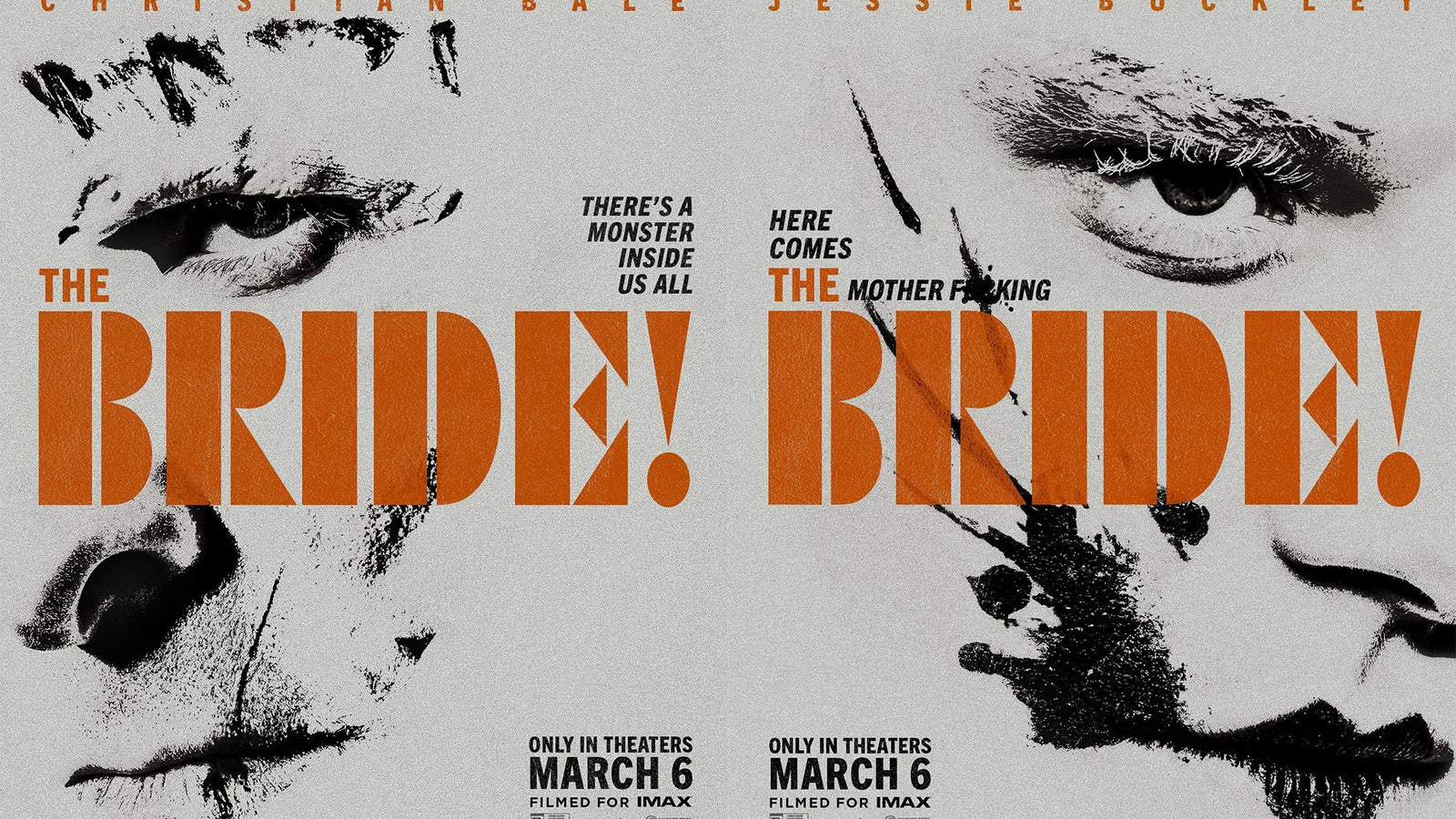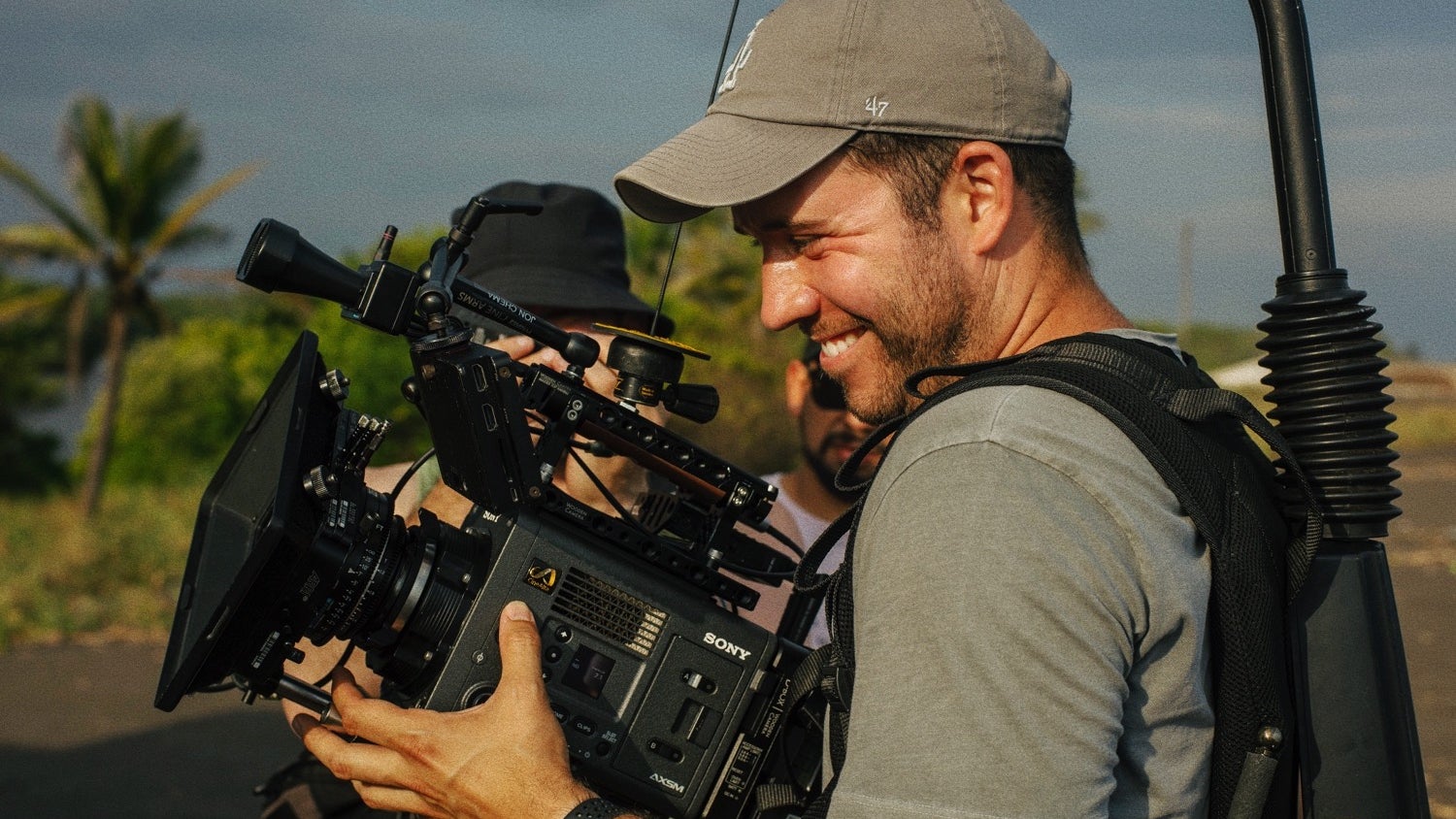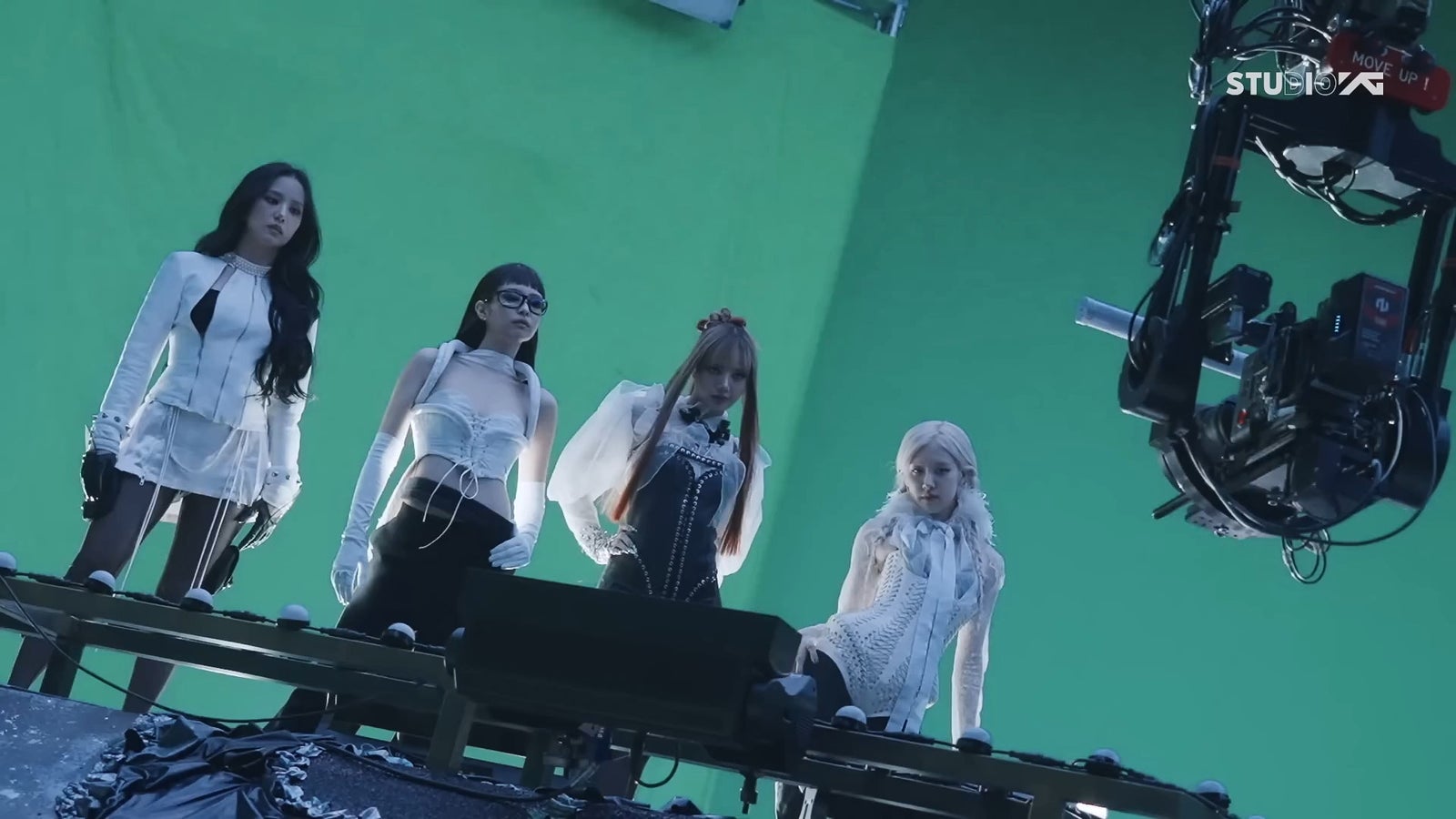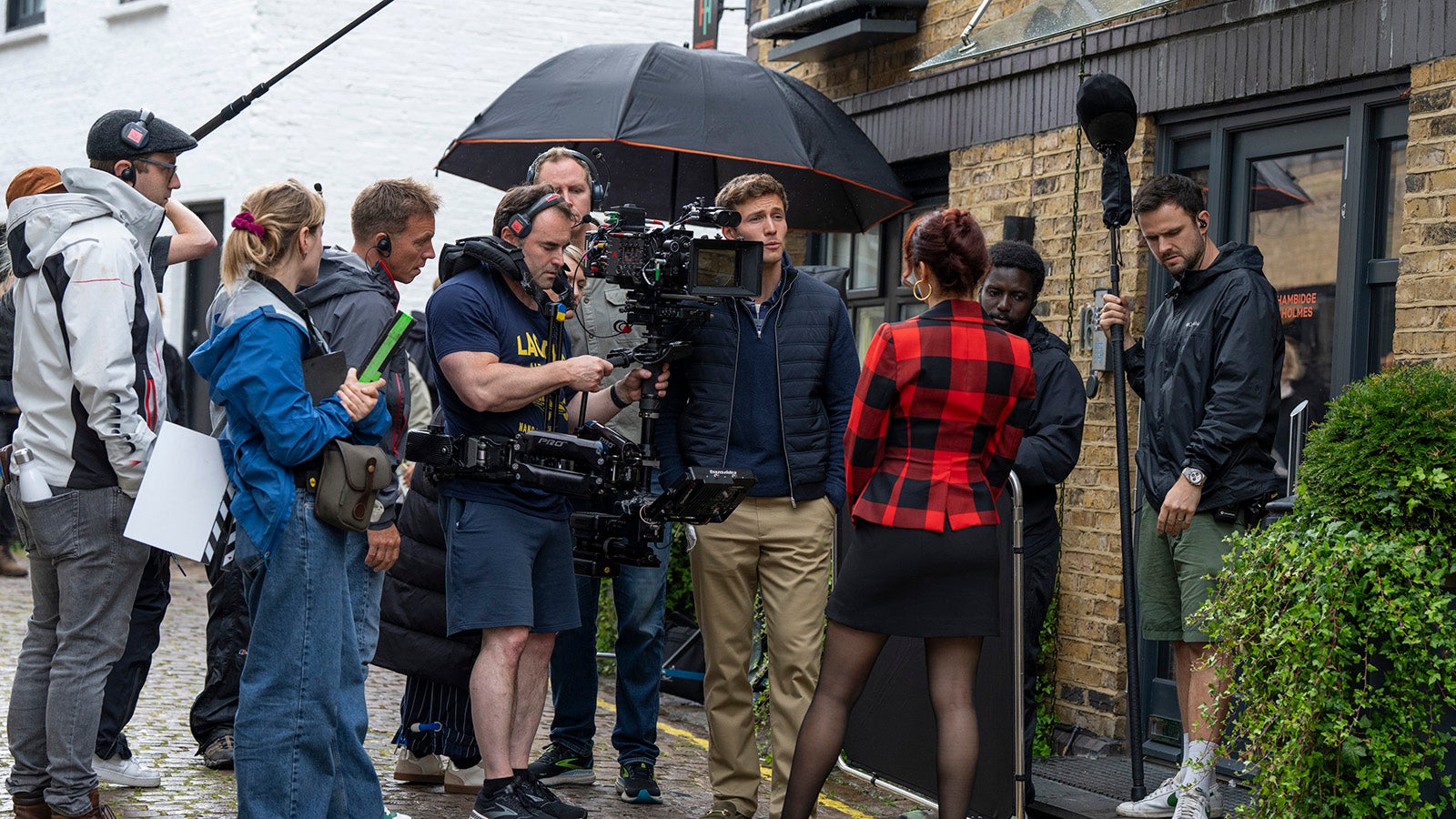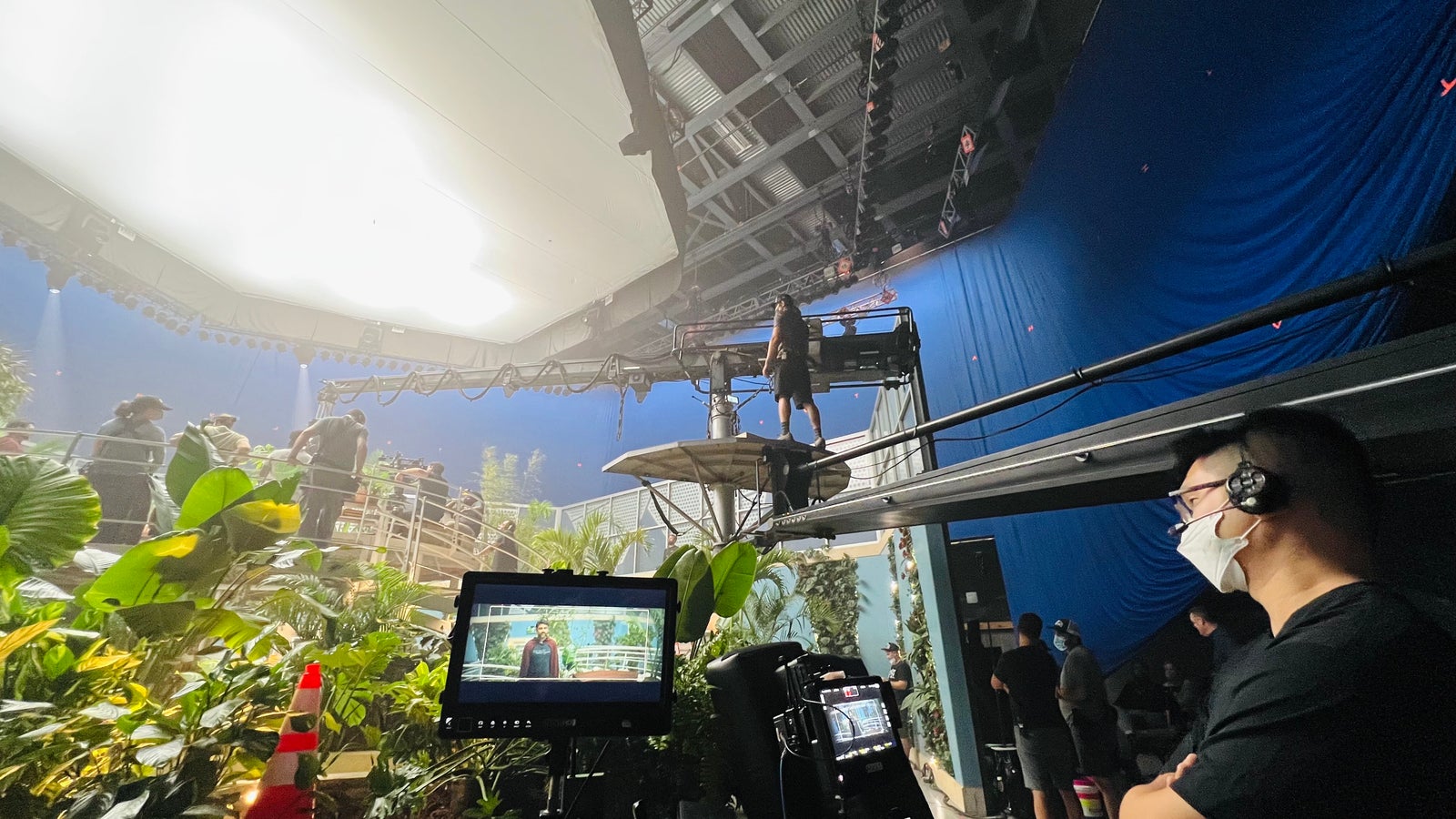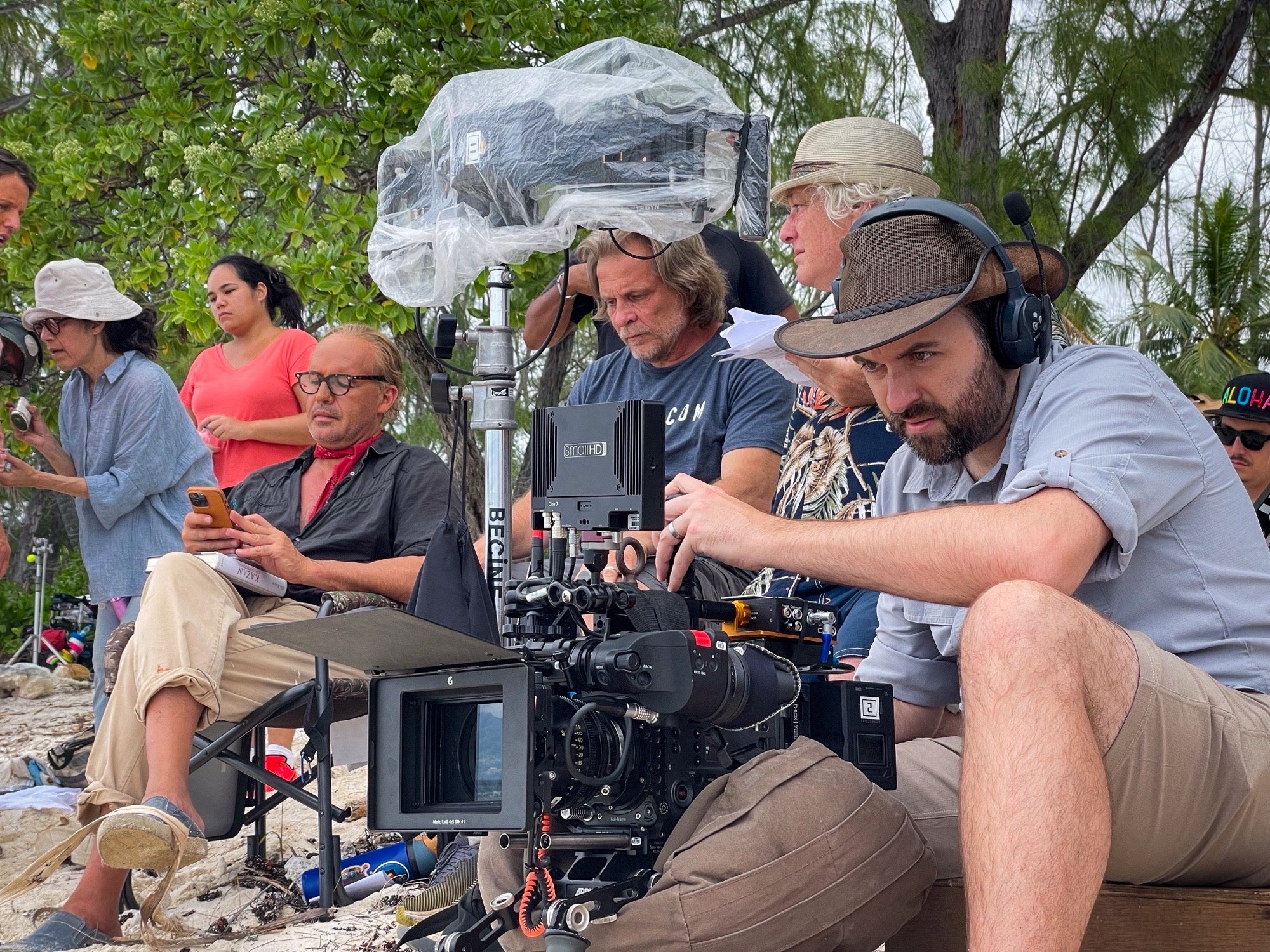
10-10-2025 - Filmmaker Interviews
How DP Garrett O’Brien Used Sony to Capture The Beauty of Tahiti In "Waltzing with Brando"
By: Yaroslav Altunin
Before embarking on the adventure of shooting in Tahiti for a film about the legendary Marlon Brando, cinematographer Garrett O'Brien paved a long road of indie films, documentaries, and cinematic music videos that seamlessly wove music with narrative storytelling.
In Waltzing with Brando, O'Brien once again teamed up with director Bill Fishman (Tapeheads, Hollywood Signs) to tell the story of Bernard Judge and his experiences with Marlon Brando during the height of the actor's career.
Using the Sony VENICE 2, O'Brien raced against a fast-paced production schedule, fought unpredictable tropical weather, and overcame limited lighting resources to craft a stunning visual spectacle with light that bounced off ocean water.
Sony Cine sat down with O'Brien to learn more about the challenges of shooting on a tropical island, how he crafted the film's visual language, and how his own personal VENICE 2 brought the film to life.
Filmmaker Interview: O'Brien on Waltzing with Brando
Set and shot almost entirely on the island of Tahiti, with some scenes shot in LA, Waltzing with Brando explores the actor's life and relationship with American architect Bernard Judge, who helped the Hollywood star try to create a paradise getaway on a deserted island. Written and directed by Fishman, the film sees Billy Zane star as Brando, with Jon Heder playing Judge.
But for O'Brien, Waltzing with Brando was a combination of two worlds, which made him the perfect choice to lens the film.
"Travel is a big part of who I am, and I love being able to tell stories that are very location-centric, even if it's a story that takes place here in Los Angeles," O'Brien said. "I read [the script] and I thought it was so much fun. To me, this was a story that was fun but also endearing at the same time, between these two guys and their experiences together."
The film was set to be shot in 28 days, with Tahiti taking only four weeks, leaving O'Brien little time for principal photography. To overcome this timing challenge and give himself and Fishman time to creative explore, O'Brien leaned on his experience with docs and sports.
"I have a history in documentary and snowboard films, so I'm not afraid to go minimalist at times when it makes sense," O'Brien said. "Sometimes, having that approach is valuable, especially with shooting in Tahiti as opposed to somewhere like Fiji to double as Tahiti."
"Fiji has a more typical film infrastructure than perhaps, like, Tahiti does, but there is a magic, an authenticity, that really came with shooting in Tahiti, and I'm so thankful and glad that we did, because of how much got onto the screen itself from shooting there."
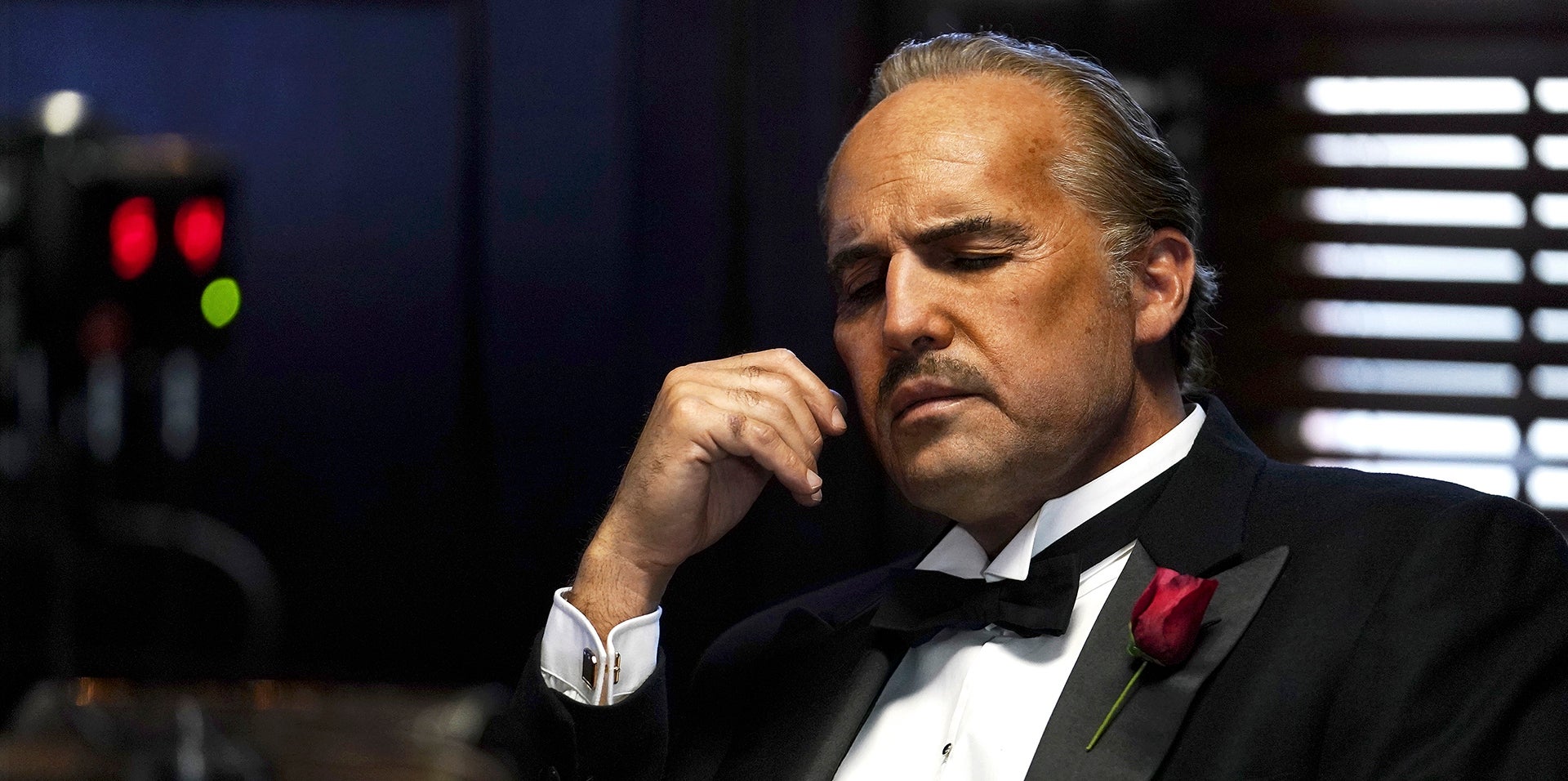
On the other hand, O'Brien had to come to terms with his perspective of Brando. As a cinematographer, The Godfather held a special place for O'Brien, and separating the actor from the role of Vito Corleone posed another challenge.
"I was having to divorce myself of Marlon Brando as I know him in The Godfather, because as a cinematographer, it's a rite of passage to study that film," O'Brien said. "For me, I found it surprisingly difficult to separate him from The Godfather and his character."
"But the research we did, and what Billy did and our director Bill did to really come to understand Marlon as who he was outside of how everybody else knows him, was really great."
While most of the film takes place in Tahiti, a portion also takes place in LA, with some scenes recreating iconic moments from the films that Brando was shooting at the time, notably The Godfather and Last Tango in Paris. To separate the wonder of Tahiti from the glamour of Los Angeles, O'Brien used color and camera movement as his main tools.
"Every time that we were in Los Angeles, we're trying to be either on sticks or on a very long lens and trying to keep the camera very grounded," O'Brien said. "The colors were also slightly desaturated, but not anything too dramatic. And with Tahiti, it's handheld, wider lenses, using a lot of natural light, or reflecting natural light with reflectors to take the incredible light that is inherent to Tahiti, which is very unique in itself."
"It was also a very controlled handheld. Something that knows where the characters are going. So it's in this perfect harmony," O'Brien added. "It's about stability with handheld, creating an energy that feels fun and exciting and inviting as opposed to something like Jason Bourne, where it's about action and a different kind of energy."
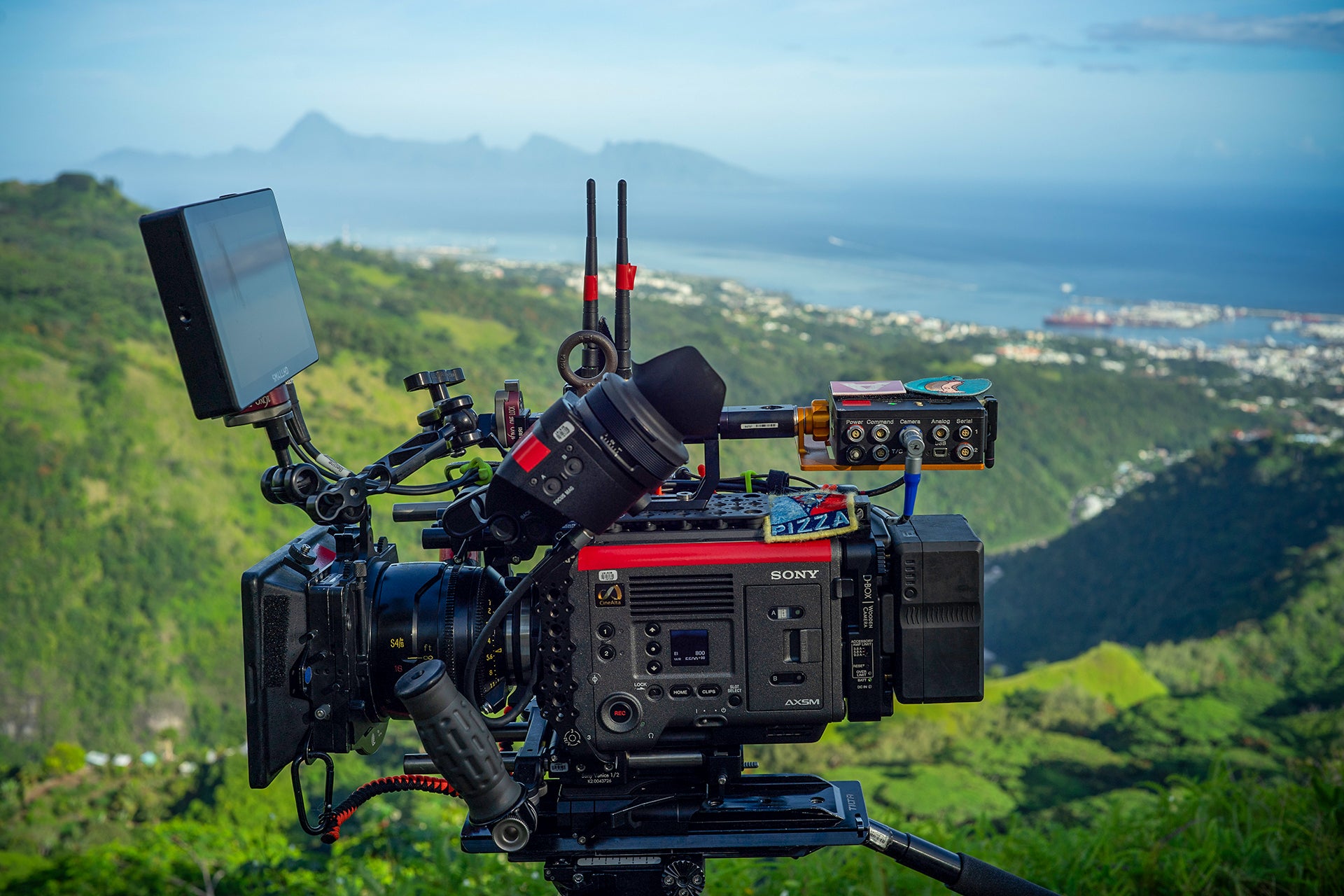
Filmmaker Interview: The Lighting and Camera O'Brien used on Waltzing with Brando
With Tahiti unable to offer the robust film infrastructure that Hollywood films require, O'Brien needed a camera that could withstand the extremes he was going to put it through. The cinematographer chose the Sony VENICE 2 for both A and B Camera, trusting it enough to bring his own personal kit to the project.
"I'm a big fan of the VENICE 2. It's the first digital cinema camera I've ever purchased because I have not felt that there has been a camera good enough that's worthy of working on every job," O'Brien said. "The number one reason why I return to it is because it does everything exceedingly well."
For tackling ever-changing lighting and weather conditions, the VENICE 2 allowed O'Brien to operate himself without being sidelined by small changes in exposure. He and his team could shoot a scene quickly and then match the look in dailies.
"One of the things that was a challenge on our film was the speed at which we needed to work," O'Brien said. "And I had to also work as an operator, even though we were shooting two cameras."
"With [the Tahitian] environment, oftentimes being backlit with sun or backlit with reflections from water, it pushes any camera up to its fullest extent of exposure or of maintaining highlights," O'Brien added. "And I was shooting with a Kodak film print emulsion finish, so it's already inherently a very high contrast look. And we were shooting with a Black Pro-Mist optical diffusion.”
I like a camera that overexposes in a way that's really beautiful. If it is going to clip out, then it should clip out really lovely. And that's what this camera does.
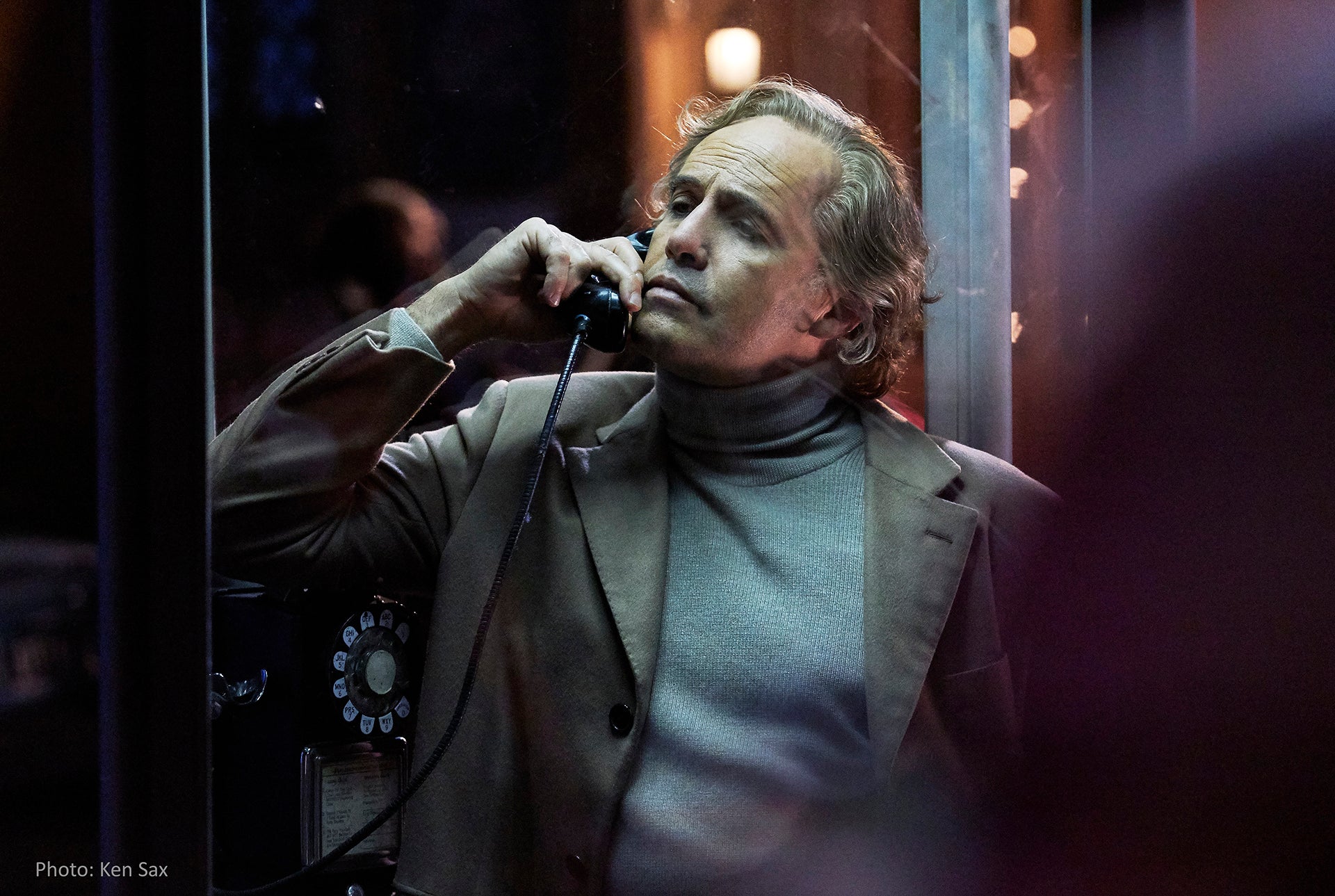
Further adding to the contrast of his compositions was the architecture of the spaces in which the film was shot. Thatch hut roofs with dark interiors overlooked bright blue oceans and vibrant green jungle, where bright midday sunlight caused a cornucopia of colors to bounce around the landscape. Using LED lights and bounce, O'Brien worked this shadow and light to his benefit.
"We had all RGB LED heads, and we were able to take whatever weather we were trying to match to the preexisting lighting that was happening," O'Brien said. "If we were bouncing sunlight off of a 4x4, 8x8, or 12x12, pushing through a window or a door, then we were able to supplement it with an interior fill light that's either the same color or by dialing it out."
"Creatively, part of our style was to embrace a little bit of rawness to the image. Part of that was doing, in post, a film look that was reminiscent of 35mm capture at that time," O'Brien added. "What that means is making it look a little bit more like a cleaner 16mm in terms of grain and halation, but letting some things, like your highlights, get hot."
Tying it all together was a pair of VENICE 2s that O'Brien had for the project. From walking out into and shooting on the water, filming in high humidity, and balancing extreme highlights with low-light night shoots, O'Brien was allowed to work at the pace the project demanded.
"That was a big part of why I chose [the VENICE 2], because I knew that I would not have the ability to control everything to the fullest degree, and that I would need to control elements in post."
However, at the same time, O'Brien doesn't like to heavily manipulate an image in post, which poses an extra layer for his toolkit. If the image was going to be overexposed, O'Brien had the expectation that it would be pleasing to the eye.
"I like a camera that overexposes in a way that's really beautiful and lovely," O'Brien said. "If it is going to clip out, then it should clip out really lovely. And that's what this camera does."
"While still using that same LUT, we went back into the Sony X-OCN RAW codec and pulled the blues and greens out of backlit water. Blues and greens that not only looked wonderful, but were natural at the same time."
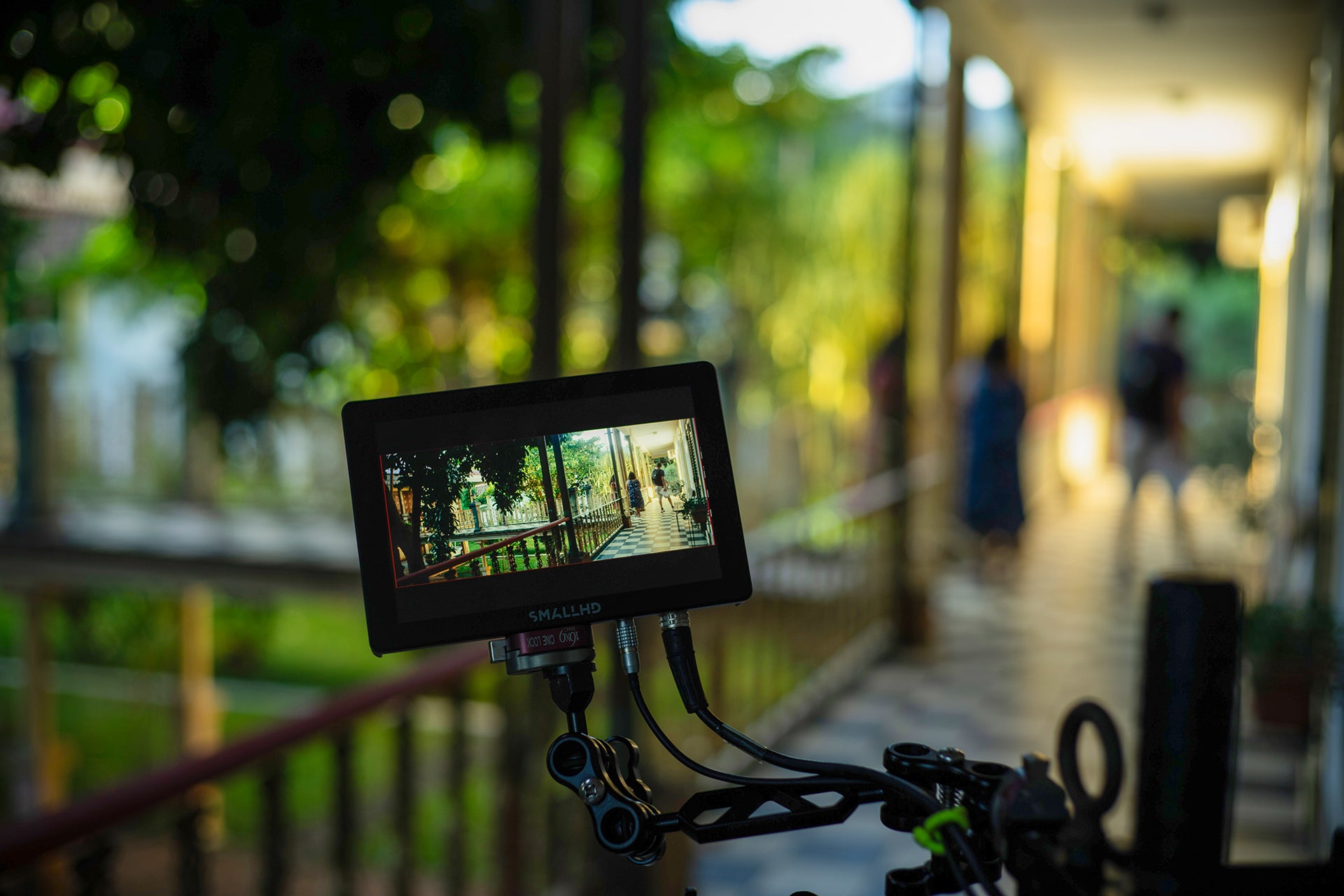
Overcoming The Challenges of a Tropical Paradise
As O'Brien thinks back on his time with Fishman, Zane, Heder, and Brando, the cinematographer jokes that he feels like "what Gordon Willis had to go through with Marlon playing for The Godfather." But with Waltzing with Brando, O'Brien also braved tropical monsoons to craft a Hollywood film about a Hollywood legend. At the film's core, Tahiti is another character in the story.
"We're trying to walk that fine line of [making it] feel like it was captured at that time with Kodak film stocks, but still bringing some sensibilities of a modern audience," O'Brien said. "And what our eyes can see when you go and visit Tahiti and see those incredible variations of blues in the water and greens in the environment."
"The VENICE just excelled at every opportunity with that. You're not fighting to find this in the grade. It's there inherently, and it just makes that process more efficient."
To see more of O'Brien's work, Waltzing with Brando was released in theaters on September 19th. To learn more about the VENICE 2 and the other cameras in the Sony Cinema Line, visit our Camera Comparison Chart.
